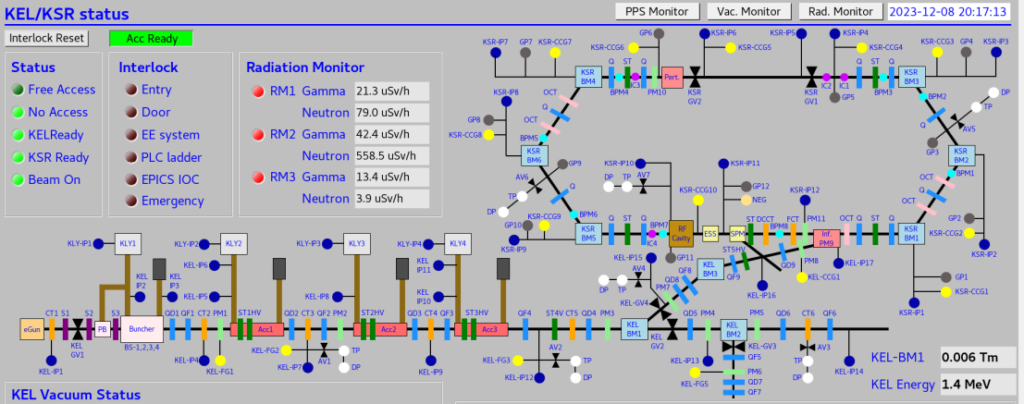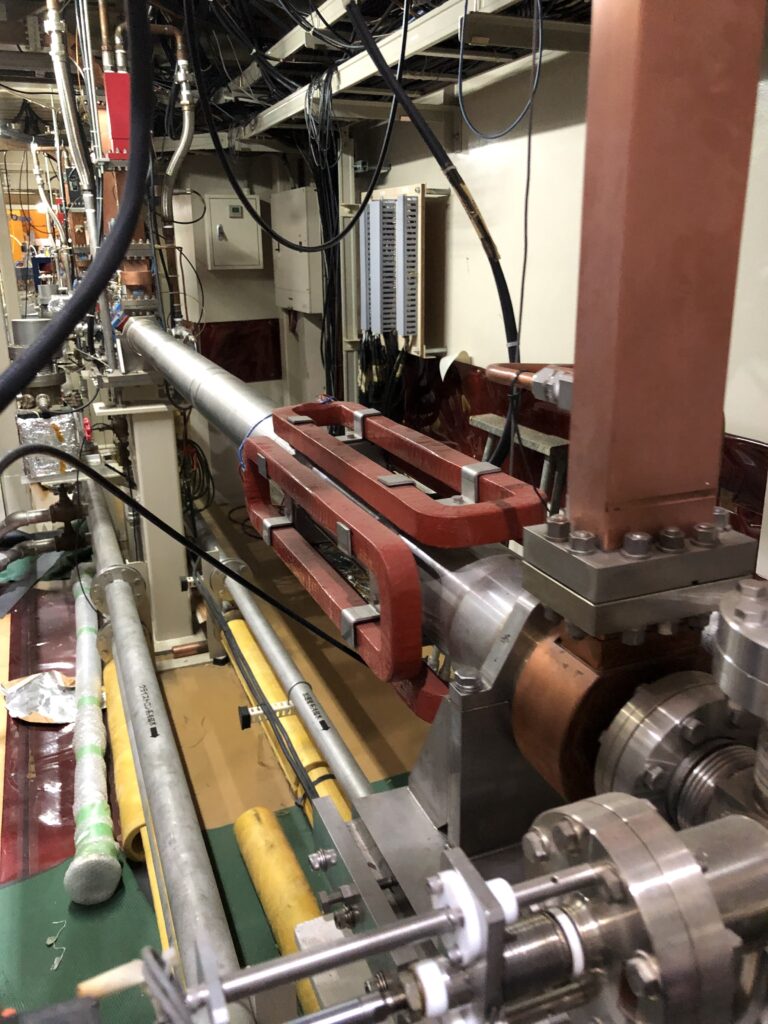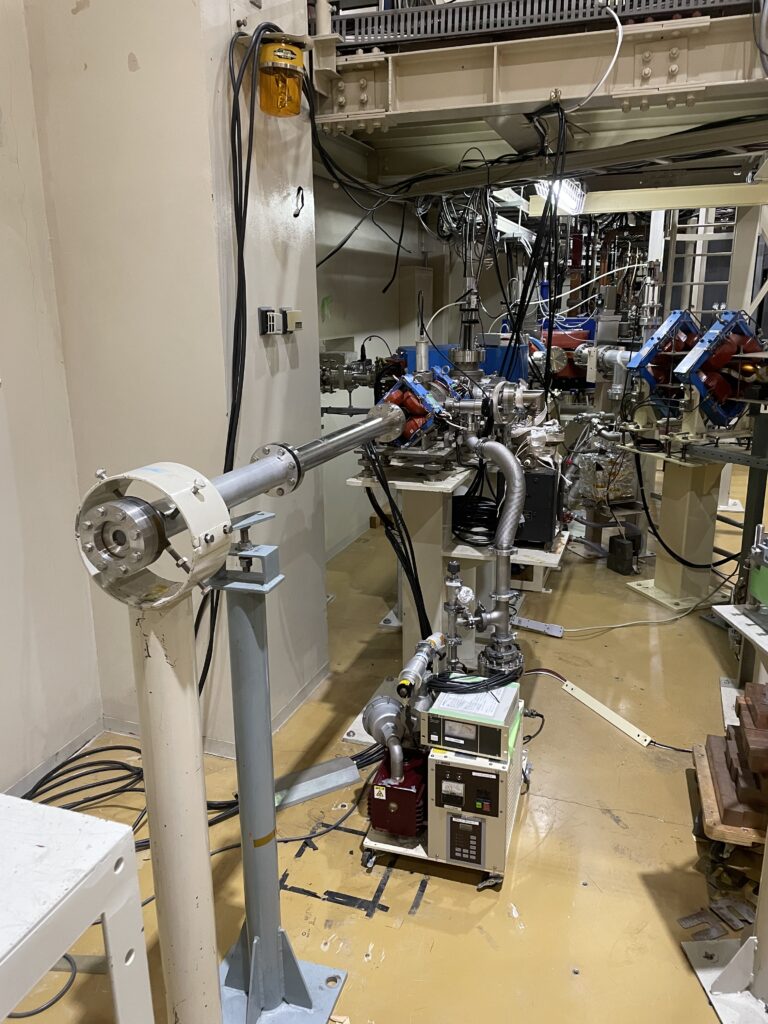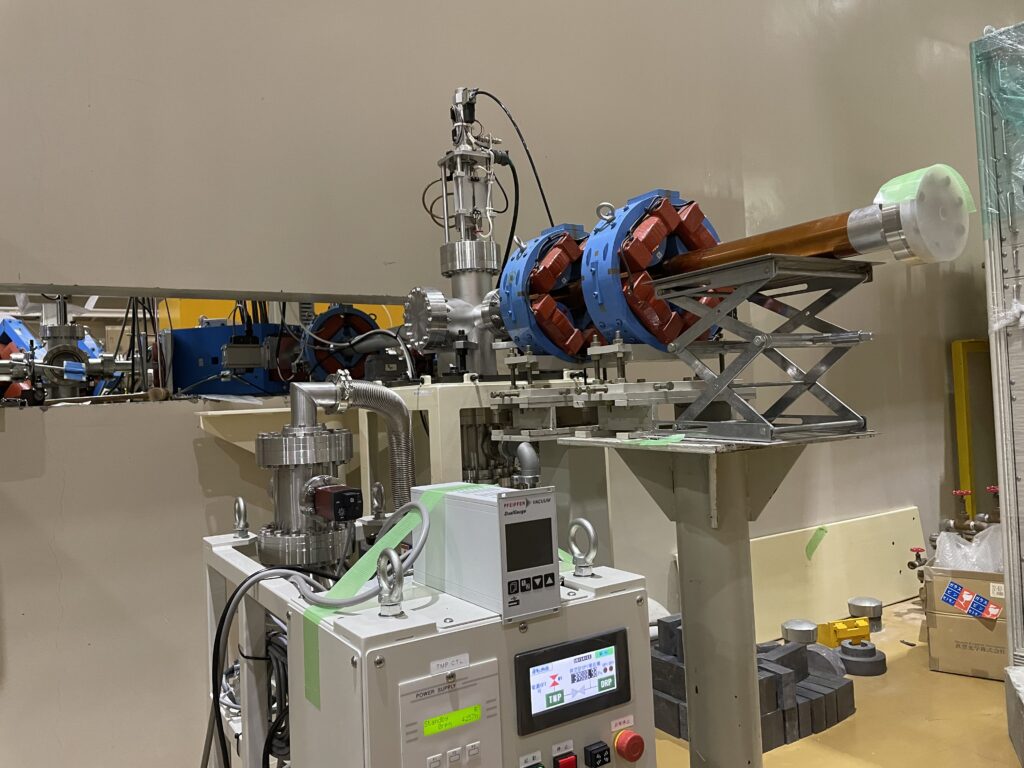Electron LINAC
KAKEN Electron Linac: KEL
The KAKEN Electron Linac (KEL), which can accelerate electron beams up to energies of 10 to 100 MeV, is located in the Ion Linear Accelerator Building at the Institute for Chemical Research, Kyoto University. The pre-buncher is a standing-wave reentrant cavity and the buncher is a traveling-wave accelerating tube. Each of the three acceleration tubes is a constant-gradient disk-loaded type with a length of 3 m. The maximum acceleration gradient in the specifications is 15 MeV/m. Operating frequencies are in S-band (2857 MHz), and RF power is provided by a klystron (PV-3030A) with 20 MW output.


KEL is used as an injector for the KAKEN storage ring KSR, but it is also used for various experiments using electron beams.
1.KEL high-intensity irradiation port (0 degree)
The KEL high-intensity irradiation port is in the straight direction of KEL-BM2 in Figure 1 (Figure 3), and typical electron beam conditions are summarized in Table 1. It is mainly used for research and developments in radiotherapy, radiation chemistry, and biology, and especially as an irradiation field for FLASH, an ultra-high-dose-rate radiation therapy that has attracted much attention in recent years. So far, the Quantum Science and Technology Agency (QST), Okayama University, Hokkaido University, Institut Pluridisciplinaire Hubert Curien (IPHC, France) have used the irradiation port as external users.
The minimum electron beam current that can be supplied stably is about 0.5 mA, which is determined by the sensitivity limit of KEL’s electron beam current monitor (CT). Therefore, a plastic scintillator can be provided separately at the end of the irradiation port to provide an even lower current beam.

| Trigger frequency | 20 Hz |
| Electron beam pulse width | 1.2 us |
| Electron beam current (peak) | 20 mA |
| Electron beam current (average) | 400 nA |
| Electron beam energy | 10 – 70 MeV |
| Pulse dose rate | 5 Gy/pulse |
| Average dose rate | 100 Gy/s |
2. KEL single electron port (90 degree)
The single-electron port is beyond the 90° deflection caused by the of KEL-BM2 (Figure 4). No electron gun is used in this beamline. extremely low-intensity electrons can be obtained by accelerating and utilizing the small amount of electrons produced in the accelerator tube discharge. Thus, the trigger frequencies shown in Table 1 are the basic event rate indicators, with event rates of 20 ~ 40 Hz being typical use cases.
This beamline can provide electrons with nearly monoenergetic energies from 10 to 70 MeV. Detector development is mainly carried out here and is used by external users (RIKEN, KEK, etc.) and students.


